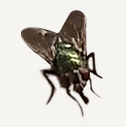Phototaxis in the Terrestrial Isopod: A Mechanism for Investigating Invertebrate Learning and Memory
Abstract
Isopods readily explore new environments and typically prefer contexts with lower levels of illumination (i.e., negative phototaxis). In the first of two behavioral experiments reported here, the ability of isopods to discriminate between light and dark nesting regions was confirmed, although evidence suggests an initial ‘instinctive’ draw toward a darker context. Extending these findings to experiment 2, isopods were trained against their negatively phototaxic tendency and had to exit a darkened start chamber in order to locate nesting material in a brighter chamber. Within-session improvements in latency to enter the nesting region were noted across training trials, coupled with evidence of somewhat better memory for the light-dark discrimination on probe tests taken immediately after training relative to probe tests taken over retention delays of 1-2 days, 5 days, and 12 days. Results are discussed within a Tinbergen-based ethological framework, and offer points of future integration of information processing perspectives with instinctive perspectives of behavior using an evolutionarily ‘old’ yet readily available species.
Recommended Citation
Buzzelli, Christopher; Kent, Jessica; Pawlak, Chelsea; and Kaut, Kevin P.
(2024)
"Phototaxis in the Terrestrial Isopod: A Mechanism for Investigating Invertebrate Learning and Memory,"
Journal of Neuropsychology and Behavioral Processes: Vol. 1, Article 1.
Available at:
https://ideaexchange.uakron.edu/jnbp/vol1/iss1/1


